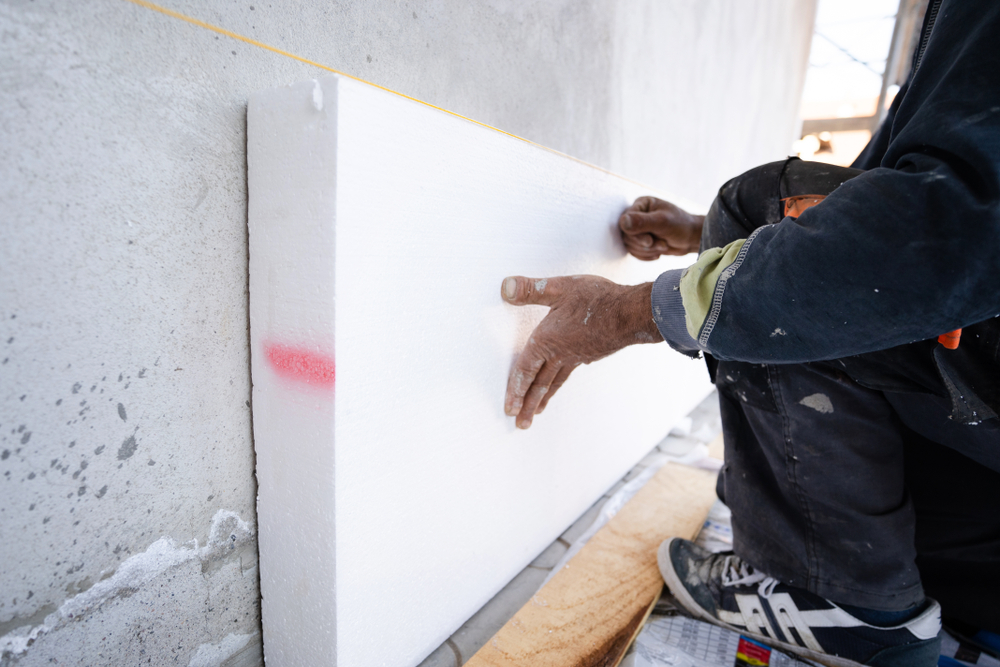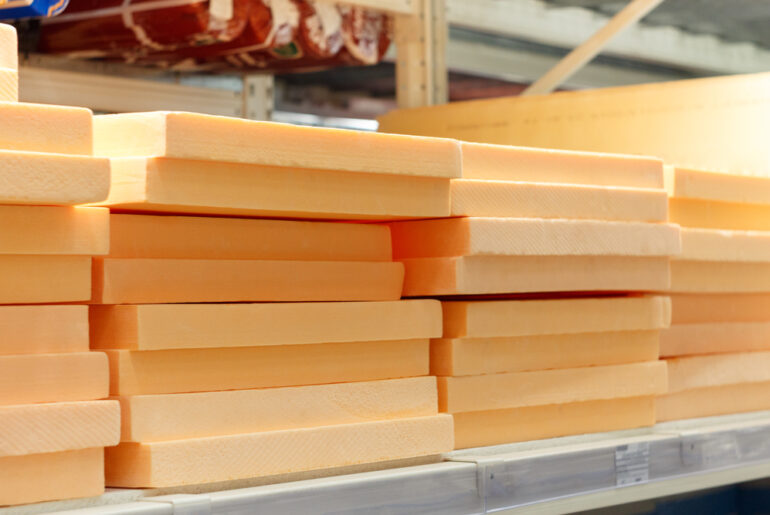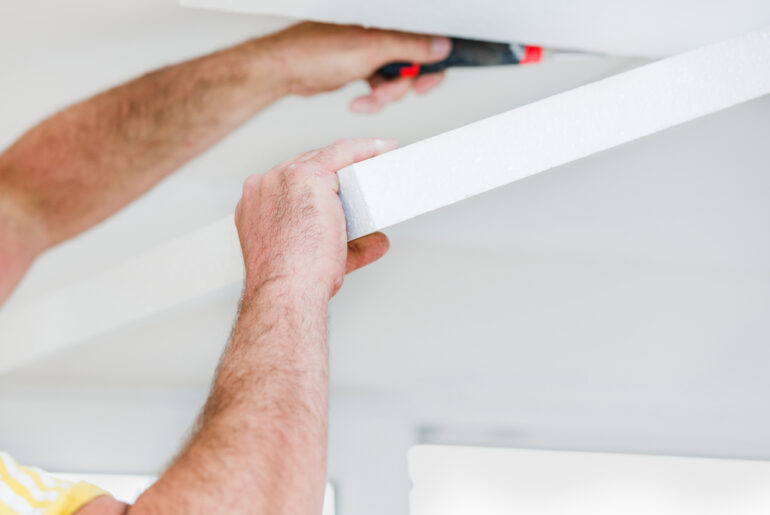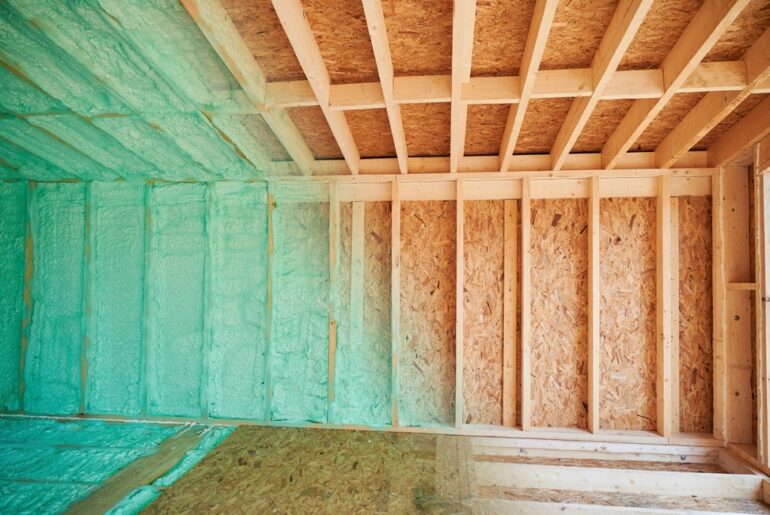The Polyurethane Foam Market report (1) estimates that polyurethane foam, or PU, is a $ 45.4 billion industry with billions of pounds of foam being manufactured each year. PU is used in consumer and industrial products and can be found in everything from bedding to building insulation.
It is so widely used because it is durable and versatile. But many worry there may be health risks associated with breathing rigid foam board.
Foam Board Insulation
PU foam board insulation is an excellent insulator for homes. It can be installed in ceilings and walls. Plus, it helps reduce energy costs (2) associated with heating and cooling a home.
Foam board insulation is available in open-cell and closed-cell, and it is generally attached with an adhesive. Most types of foam board insulation have a moisture-resistant layer and a fire-resistant coating.
Is Foam Board Insulation Safe To Breathe?
Foam board insulation may not be safe to breathe, depending on what chemicals are used in the manufacturing process. The boards are sometimes treated with flame retardants that can be toxic — polybrominated diphenyl ethers or PBDEs.
Exposure to PBDE can cause ill health effects (3) if fumes are released from the boards. Breathing PBDE fumes can lead to reproductive issues and thyroid problems. Exposure to PBDE can also cause skin irritation.
Why Breathing Rigid Foam Board Is Dangerous?
If fumes are released from the foam boards, a host of health issues could arise for those breathing the contaminated air. While many brands of insulation may not pose any risk, it is best to research any brand of rigid foam board you plan to purchase.
Some studies have shown PBDEs may be related to increased cancer risk (4). Boards also contain styrene, which has been known to cause cancer (urethra and epididymal) in rats. However, the US Department of Health and Human Services has not deemed (5) styrene a health hazard.
Types of Foam Boards and Their Risks
Polyisocyanurate Boards: These boards have a foam core that is made from isocyanates and polyols, which are sandwiched between fiberglass mats, kraft paper facers, or aluminum sheets.
Polyisocyanurate boards tend to contain a chlorinated flame retardant called TCPP which belongs to the halogenated family. Halogenated flame retardants can be highly toxic (6). Isocyanates, a chemical associated with work-related asthma, are also found in polyisocyanurate boards.
EPS Boards: EPS or expanded polystyrene boards have been known to contain a toxic and bioaccumulative flame retardant called hexabromocyclododecane (HBCD). This chemical has mostly been omitted from EPS insulation manufactured in the US, dating back to 2017. However, some EPS boards may still contain HBCD.
Some EPS boards are treated with a termite-resistant insecticide that may be an endocrine disrupter (7) and is hazardous to bee populations.
XPS Boards: Extruded polystyrene boards (XPS) were also historically treated with HBCD flame retardants. Even now, the newer boards are treated with an alternative retardant that is halogenated and similar to HBCD. These types of boards may also contain hydrofluorocarbons (HFCs) which are known to contribute to global warming.
There are regulations in several states stopping manufacturers from using HFCs (8) due to their damage to the environment.
How To Protect Yourself From Rigid Foam Board Breathable Particles?
The best way to protect yourself from breathable particles of rigid foam board is to not have any exposed board in your home. The insulation should be properly covered to protect the purity of the home’s air. This protection also offers protection from moisture which can cause the boards to warp or expand. Boards should be protected from humidity as well.
You are unlikely to breathe any insulation particles or fumes if you practice recommended safety procedures during installation. Safety precautions may include wearing gloves, safety glasses, long sleeve shirts, masks, and non-slip shoes.
Hiring a professional installer is the best method for protecting yourself from accidental exposure. The pros will be well-versed in the hazards of insulation and the necessary precautions to take in order to protect themselves.
What to Do If You Inhaled Rigid Foam Board?
If you worry that you have inhaled fumes from rigid foam board insulation, you need to move to fresh air (9) — preferably outside the area where the insulation is located. Any tight clothing should be loosened to better facilitate breathing.
A person who is feeling severe symptoms from inhaling chemicals found in rigid foam board insulation (or anywhere else!) should seek medical attention. Make the physician aware of the type and manufacturer of the foam board, how long you were exposed to the fumes, when the symptoms started, and the severity of the symptoms.
Sources:
1. Research and Markets. (2022) Polyurethane (PU) Foam Market: Global Industry Trends, Share, Size, Growth, Opportunity and Forecast 2022-2027. https://www.researchandmarkets.com/reports/5647914/polyurethane-pu-foam-market-global-industry
2. U.S. Department of Energy. (2010) Guide to Home Insulation. https://www.energy.gov/sites/prod/files/guide_to_home_insulation.pdf
3. Washington State Department of Health. PBDEs. https://doh.wa.gov/community-and-environment/contaminants/pbdes#:~:text=Animal%20studies%20have%20shown%20that,thyroid%20and%20other%20hormone%20levels.
4. National Library of Medicine. (2009) Do Polybrominated Diphenyl Ethers (PBDEs) Increase the Risk of Thyroid Cancer? https://www.ncbi.nlm.nih.gov/pmc/articles/PMC2612591/
5. Agency for Toxic Substances and Disease Registry. (2014) Public Health Statement for Styrene https://wwwn.cdc.gov/TSP/PHS/PHS.aspx?phsid=419&toxid=74
6. National Library of Medicine. (2021) Organophosphate Esters: Are These Flame Retardants & Plasticizers affecting Children’s Health? https://www.ncbi.nlm.nih.gov/pmc/articles/PMC8631201/
7. National Library of Medicine. (2011) Effect of Endocrine Disruptor Pesticides: A Review. https://www.ncbi.nlm.nih.gov/pmc/articles/PMC3138025/
8. United States Environmental Protection Agency. (2021) U.S. Will Dramatically Cut Climate-Damaging Greenhouse Gases with New Program Aimed at Chemicals Used in Air Conditioning, Refrigeration. https://www.epa.gov/newsreleases/us-will-dramatically-cut-climate-damaging-greenhouse-gases-new-program-aimed-chemicals
9. Health Direct. Inhaled substance or foreign object. https://www.healthdirect.gov.au/inhaled-substance-or-object#:~:text=If%20you%20have%20inhaled%20chemical,fumes%2C%20seek%20medical%20attention%20immediately.





